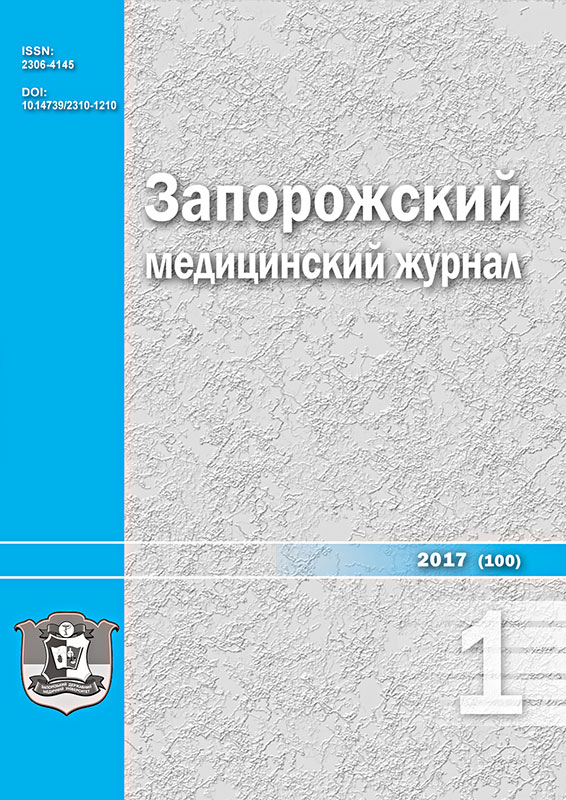Chronic allergic skin diseases in men: the influence of age-related dishormonal status
DOI:
https://doi.org/10.14739/2310-1210.2017.1.91635Keywords:
dermatitis, hormones, malesAbstract
The study of the etiology and pathogenesis of allergic skin diseases, as well as a reasonable selection of their optimal treatment are extremely relevant problems of modern medicine. Changes in the sex and gonadotropic hormones levels, which occur in patients with chronic allergic dermatoses and affect them, are studied insufficiently.
The objective of this work was to study changes in levels of sex and gonadotropic hormones in patients with allergic dermatoses in older age groups and the development of effective methods of their treatment.
Materials and Methods. Were examined 203 men: 36 healthy persons aged 25–44 years, 167 male aged 45–64 years (including 63 healthy males and 104 patients with chronic allergic dermatoses). The assessment of allergic dermatoses severity was conducted according to the SCORAD system. The evaluation of patients’ life quality was performed by means of a DLQI questionnaire. The Aging Males Symptoms Scale was used. The concentration of testosterone, testosteron-binding globulin, follicle stimulating hormone, luteinizing hormone, prolactin were studied in blood serum by ELISA.
Results. During the study it was found that male patients with chronic allergic dermatoses had significantly lower testosterone levels and significantly higher levels of follicle stimulating hormone, luteinizing hormone, prolactin, testosteron-binding globulin in comparison with the group of healthy men of similar age. Additional use of drug on the basis of steroidal saponins in the complex therapy of male patients aged 45–64 years with chronic allergic dermatoses had a positive clinical effect, which manifested by reduction of SCORAD index, DLQI index, Aging Males Symptoms Scale index and also normalized the level of testosterone. Additional use of nootropic drug in this cohort of patients had positive clinical effect, which manifested by reduction of SCORAD index, DLQI index, Aging Males Symptoms Scale index and also normalized the levels of testosterone, follicle stimulating hormone, luteinizing hormone and prolactin.
Conclusions. The obtained results indicate the existence of age-related dishormonal state in male patients aged 45–64 years with chronic allergic dermatoses. The results of investigation substantiate the feasibility of corrective measures in male patients with allergic chronic dermatoses, by the use of nootropic drug and drug on the basis of steroidal saponins.
References
Carlsten, C., Dimich-Ward, H., Ferguson, A., Watson, W., Rousseau, R., & Dybuncio, A. (2013). Atopic dermatitis in a high-risk cohort: natural history, associated allergic outcomes, and risk factors. Ann. Allergy Asthma Immunol., 110(1), 24–28. doi: 10.1016/j.anai.2012.10.005.
Garmhausen, D., Hagemann, T., Bieber, T., Dimitriou, I., Fimmers, R., & Diepgen, T. (2013). Characterization of different courses of atopic dermatitis in adolescent and adult patients. Allergy, 68(4), 498–506. doi: 10.1111/all.12112.
Kubo, A., Nagao, K., & Amagai, M. (2012). Epidermal barrier dysfunction and cutaneous sensitization in atopic diseases. J. Clin. Invest., 122(2), 440–447. doi: 10.1172/JCI57416.
Reznichenko N. Yu. (2013). The state of the sympathoadrenal and vagoinsular systems in men of mature age, who suffer from allergic dermatoses. Crimean J. of Experimental and Clinical Medicine, 3(1–2), 24–27.
Charman, C., Chambers, C., & Williams, H. (2003). Measuring atopic dermatitis severity in randomized controlled clinical trials: what exactly are we measuring? J. Invest. Dermatol., 120, 932–941. doi: 10.1046/j.1523-1747.2003.12251.x.
Finlay, A. Y. (2001). Quality of life in atopic dermatitis. J. Am. Acad. Dermatol., 45, 64–66.
Downloads
How to Cite
Issue
Section
License
Authors who publish with this journal agree to the following terms:
Authors retain copyright and grant the journal right of first publication with the work simultaneously licensed under a Creative Commons Attribution License that allows others to share the work with an acknowledgement of the work's authorship and initial publication in this journal. 

